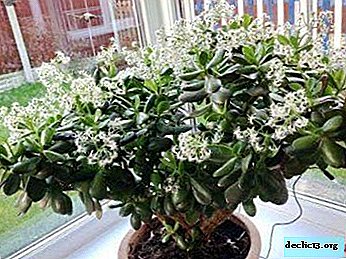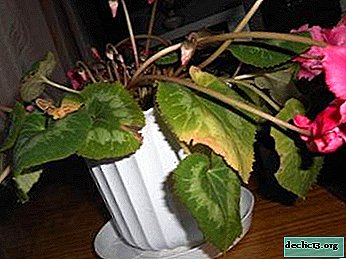How to clean pan from burnt food and blackness

The process of removing old and dense pollution is quite laborious. It is important to choose the right processing method that will help to effectively clean the pan from burnt food and blackness inside and out. In folk recipes, the means available to every housewife are used.
Safety Precautions
The use of any cleaning components or finished household chemicals requires careful handling. Read the instructions carefully and always wear rubber gloves. Clean in well-ventilated areas and do not breathe vapors.
Clean cooled pots and prevent cold water from getting on hot dishes, as this will lead to damage and deformation. Do not use metal sponges and abrasive products that invariably scratch the surface of the dishes. For cleaning at home, soft foam sponges are recommended.
Folk remedies for all types of pots

Home remedies that are passed on from generation to generation will help to clean the pan from any material without fear for health. The methods are based on the use of natural products that do not contain chemicals. In addition, folk methods minimize financial costs and exclude the purchase of expensive chemicals from the store.
- Coffee. Coffee grounds remove the burnt milk from the sides of the pan. Leave the rest of natural insoluble coffee for 2 hours, then grate the dishes intensively. Coffee removes not only pollution, but also an unpleasant odor from the refrigerator.
- Salt and baking soda. Cope with pollution both on the outside and on the inside. A slurry of salt, soda and water is used, which is applied to problem areas.
- Lemon acid. It will help whiten the enameled surface. Pour the pan with a solution based on: 1 liter of liquid ½ tbsp. l acids.
- Onion. Used to remove burnt food. Pour large-sized peeled onions and put on fire. Boil for 5 minutes, then rinse under running water.
- Apple peel. One of the old ways to clean. You will need a peel of sour apples, which is poured with water and boiled for 20 minutes. During this time, the pan will become like new.
Folk methods are suitable for cleaning kitchen utensils at home with coatings: enamel, Teflon, ceramics, stainless steel and aluminum. All products are safe and environmentally friendly.
Household chemicals against soot and black

The use of household chemicals implies the effect of active substances on the coating, which means possible damage to the surface. After cleaning by such methods, the product requires special care when rinsing, and compliance with conditions without sudden changes in temperature.
- Dishwashing Detergent. Guaranteed to cope with fresh pollution. Pour boiling water over the dishes, add the product depending on the amount of soot, leave for a day.
- Persol. Removes yellowness. Pour hot water into the container, add persal and bring to a boil.
- White. It is used when other methods have not yielded results or the effect is not sufficiently pronounced. Pour cold water into the pan, add 1 tbsp. l whiteness and leave for 24 hours. Then, without wiping, drain the liquid. Pour new water, bring to a boil, drain again. Repeat the procedure 3 times.
When buying a finished product, make sure that it can be used for appropriate utensils. Not all substances act equally on different coatings.
Cleaning the enamel pan from soot and blackness

The more time has passed after burning, the more difficult it is to remove the blackness. It is advisable to start cleaning immediately. In extreme cases - fill the pan with water.
Enameled cookware often burns because it is made of thin material, and the bottom surface warms up too quickly. Excessive manipulations with a stiff brush or knife will aggravate the condition of the pan: cracks will appear on the enamel and it will become worthless. Any cleaning methods are used with caution.
Folk remedies
Table vinegar
To remove burnt food, fill the pan with a mixture of water and vinegar in equal proportions and leave for 2 hours. Then treat with detergent. Old carbon deposits are poured with hot water, as when cleaning the oven. To speed up the process, the pan with the solution is heated on the stove until the dirt begins to exfoliate.
Activated carbon
Shredded activated carbon can remove a thick layer of soot and fat. Crush at least 10 tablets into powder, apply to contamination, and after 20 minutes pour warm water. When the liquid becomes cold, clean the pan as usual.
Silicate glue and soda ash
A mixture of soda ash and silicate glue will clean the burnt enamel pan inside and out. To use the home method you will need a large container, which will fit burnt utensils.
First pour a little water, add ½ pack of soda, 1 tube of silicate glue and cook to a boil. In the resulting mixture, put a spoiled pan and cook for another 15 minutes. Then rinse with cool water, helping to remove dirt with a sponge. This method can also be used to clean the hood.
Salt
Salt is a product that is in every kitchen. In addition to the main application, it effectively removes fresh soot.
Pour water into the pan, pour 4 tbsp. l salt and boil for 5 minutes. Then drain the liquid and wipe off the dirt with a foam sponge. This option will help remove greasy stains and microwave.
Video instructions
To prevent the appearance of soot in the future, it is recommended to cook soups and stews exclusively in enameled dishes. According to consumer surveys, washing pots in the dishwasher leads to darkening, so they clean the enamel with your hands.Cleaning a stainless steel pan from a burnout

Stainless steel pans need constant care. If dirt and grease are on the surface, the material deteriorates and wears out quickly. Consider a universal recipe for cleaning dishes from stainless steel, which will remove carbon deposits and other impurities.
Pour soda onto the stain, pour with vinegar and add a couple of drops of detergent. Rub with a sponge dampened in hot water until carbon deposits are removed.
Immediately after cleaning, wipe the surface with a dry towel. If this is not done, spots will appear due to water.
How to clean an aluminum pan
For cleaning metal utensils, gentle methods are used that will not harm the soft coating. Aluminum cookware does not tolerate the effects of abrasives, powders or other substances containing hard particles and suspensions.
- Baking soda solution. In 1 hour it will relieve traces of burnt jam. Pour water into a saucepan, pour ½ pack of soda and boil for an hour. Rinse off contamination with a sponge.
- Laundry soap and silicate glue. Help wipe off grease stains. Grate laundry soap in a container of water, add glue and bring to a boil. After 30 minutes of cooking pour into the problem place. Then rinse under the tap.
- Toothpaste. A proven method from descaling and traces of fat, and cleaning white sneakers from fabric. Use the product carefully, otherwise damage may occur. Apply to a wet pan and rub with a sponge.
Dark spots inside will clear kefir or sour milk. The same properties have: cucumber, tomato pickle or soft unripe tomatoes.
The most effective external cleaner

Cleaning the pot outside is carried out in a room with an open window or window leaf.
The most effective tool that will get rid of soot from the outside is a solution of water and vinegar essence.
In a wide container, mix water and essence in equal amounts, and put on fire. When the liquid boils, keep the burned pan over steam. The optimal exposure time is 10 minutes. Then wipe the black with a sponge.
Useful Tips
To avoid burning food in enameled dishes, pour a little water on the bottom.
Being in the fresh air, burnt pots can be rubbed with sand, then it will be easier to remove pollution at home. This recommendation does not apply to aluminum cookware, as it will scratch it.
Easier and faster to wash new surfaces. To maintain the integrity of the coating, it is recommended to use wooden or silicone blades.
Daily care and washing with mustard will protect dishes from the outside from the adherence of grease and shallow dirt. Traces of soot and soot can be wiped off with a soft sponge with mustard powder. Moisten the sponge with water before applying the powder.
The dishes will shine like new if you regularly wipe it with slices of raw potatoes. The effect is especially noticeable on stainless steel.

















